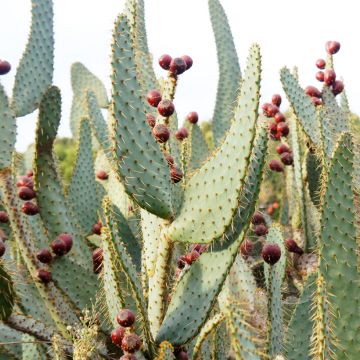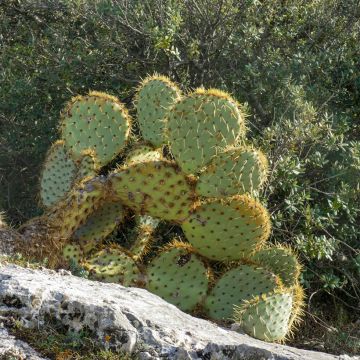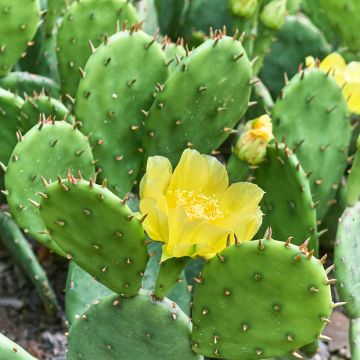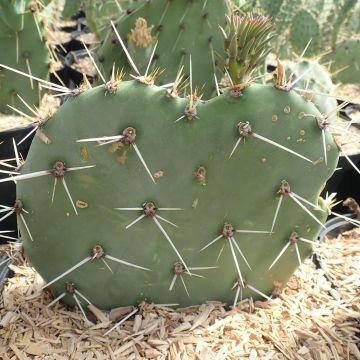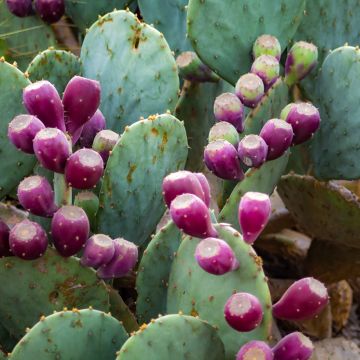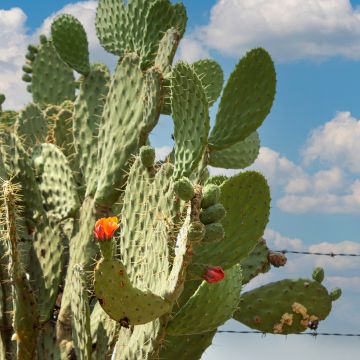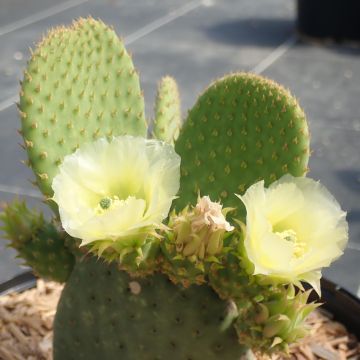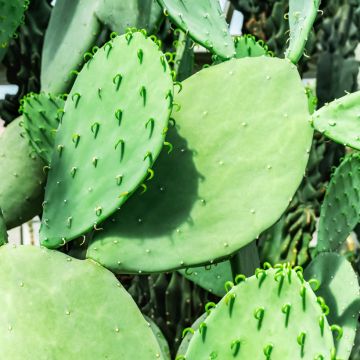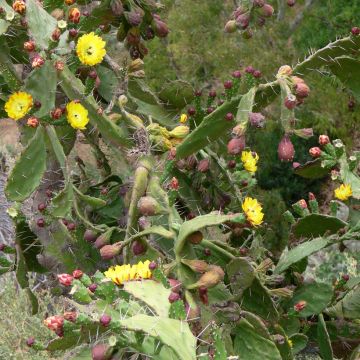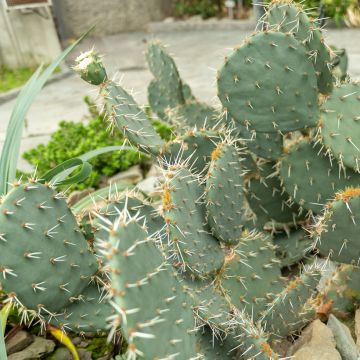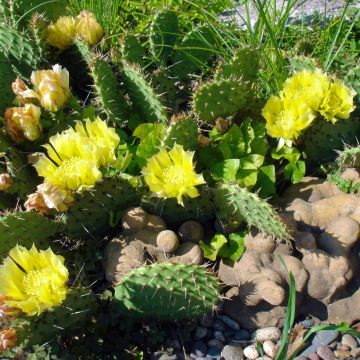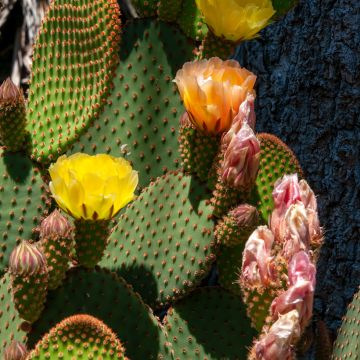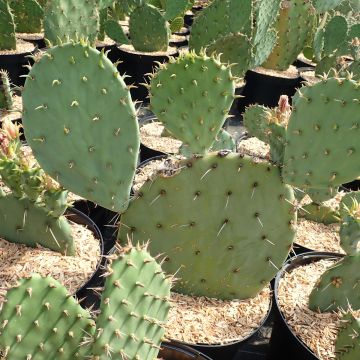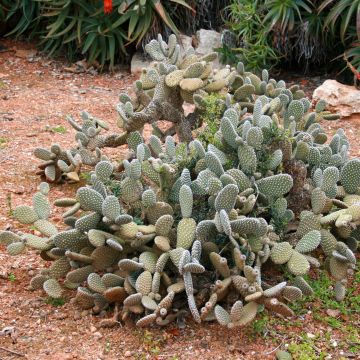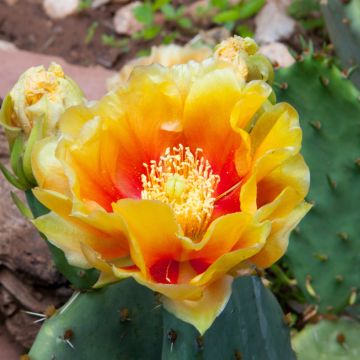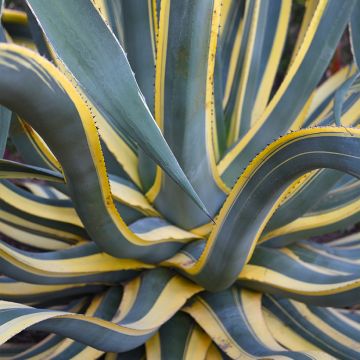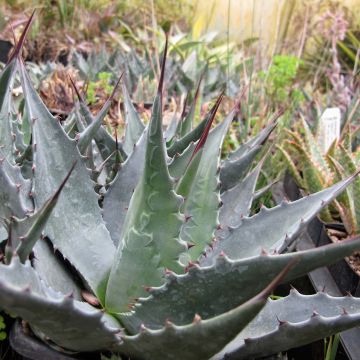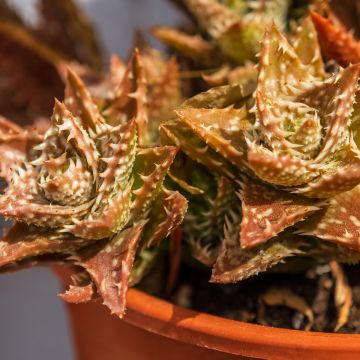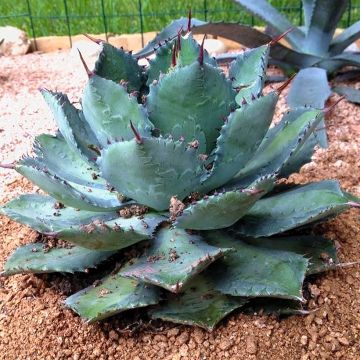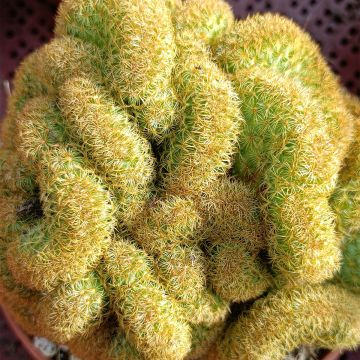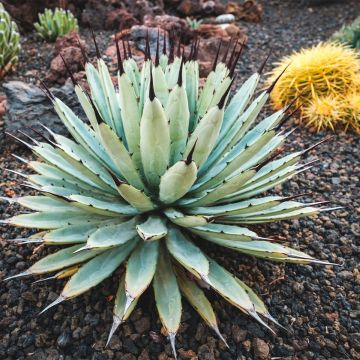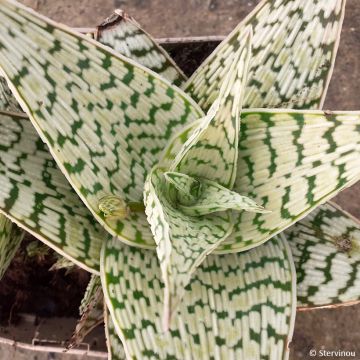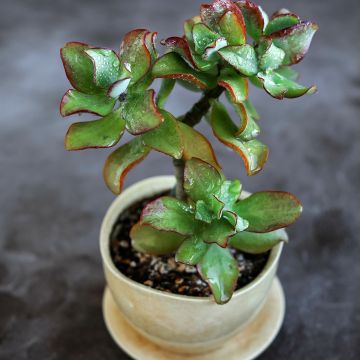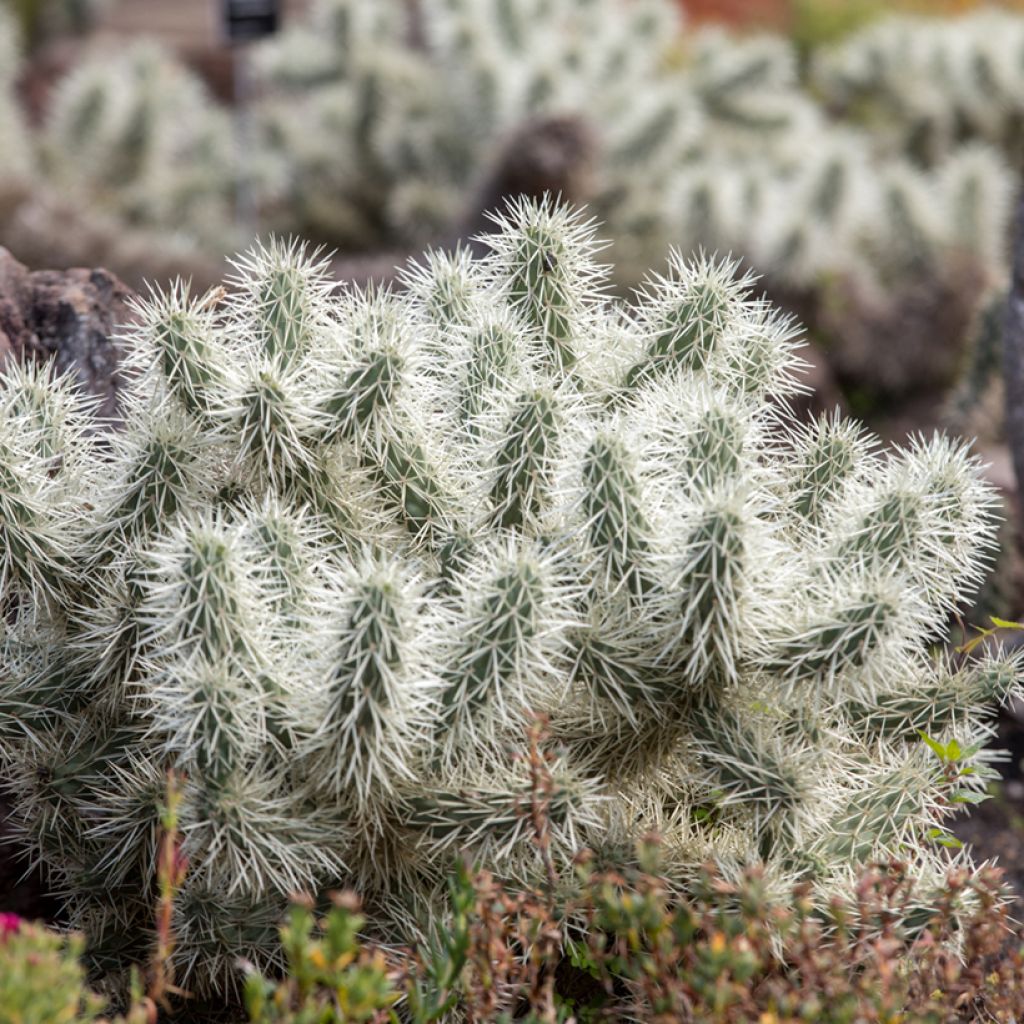

Cylindropuntia tunicata
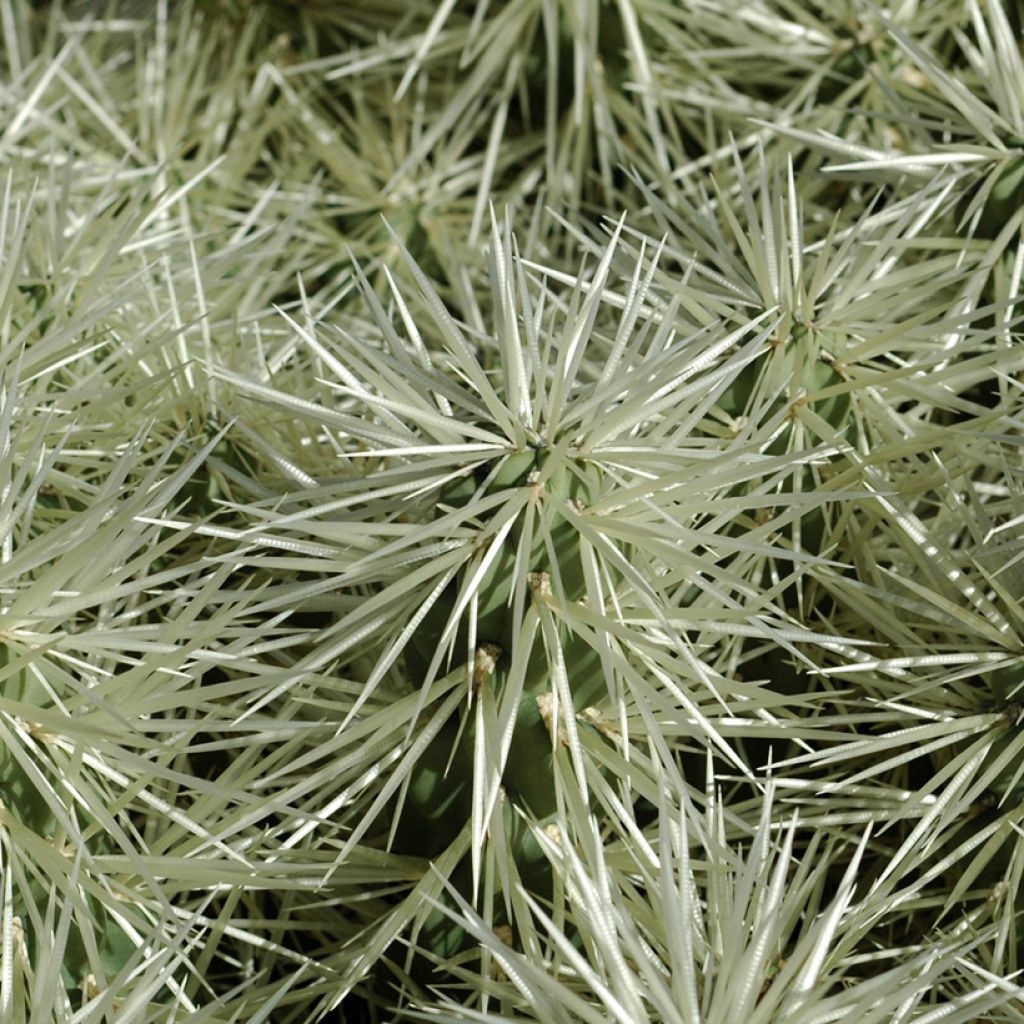

Cylindropuntia tunicata
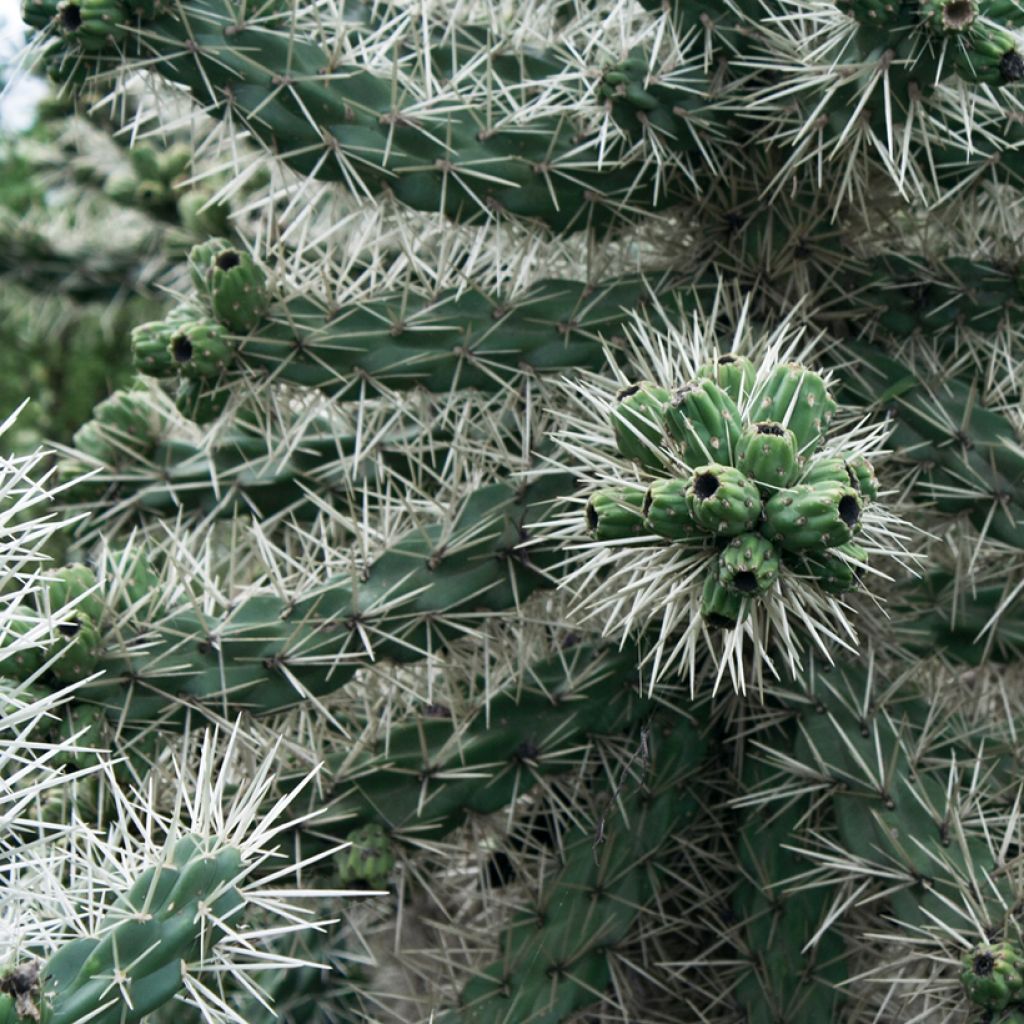

Cylindropuntia tunicata
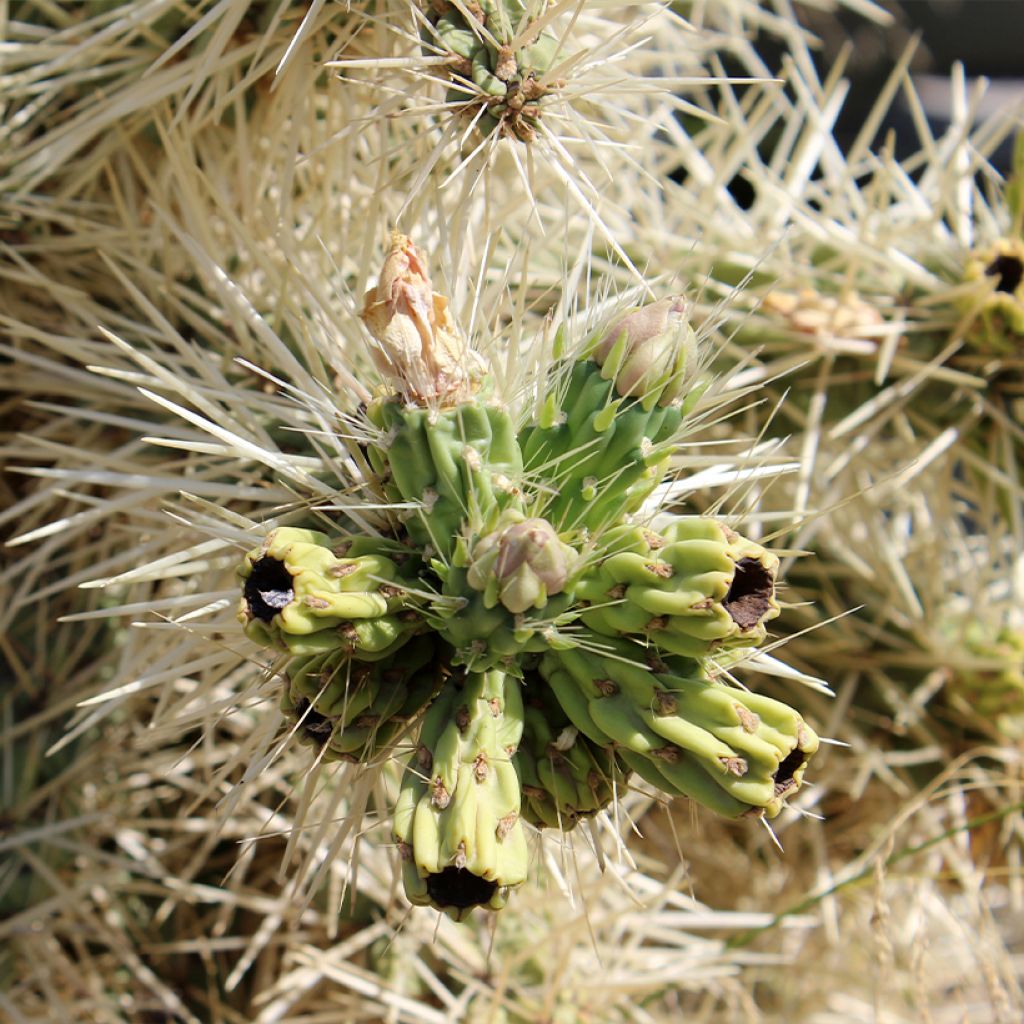

Cylindropuntia tunicata
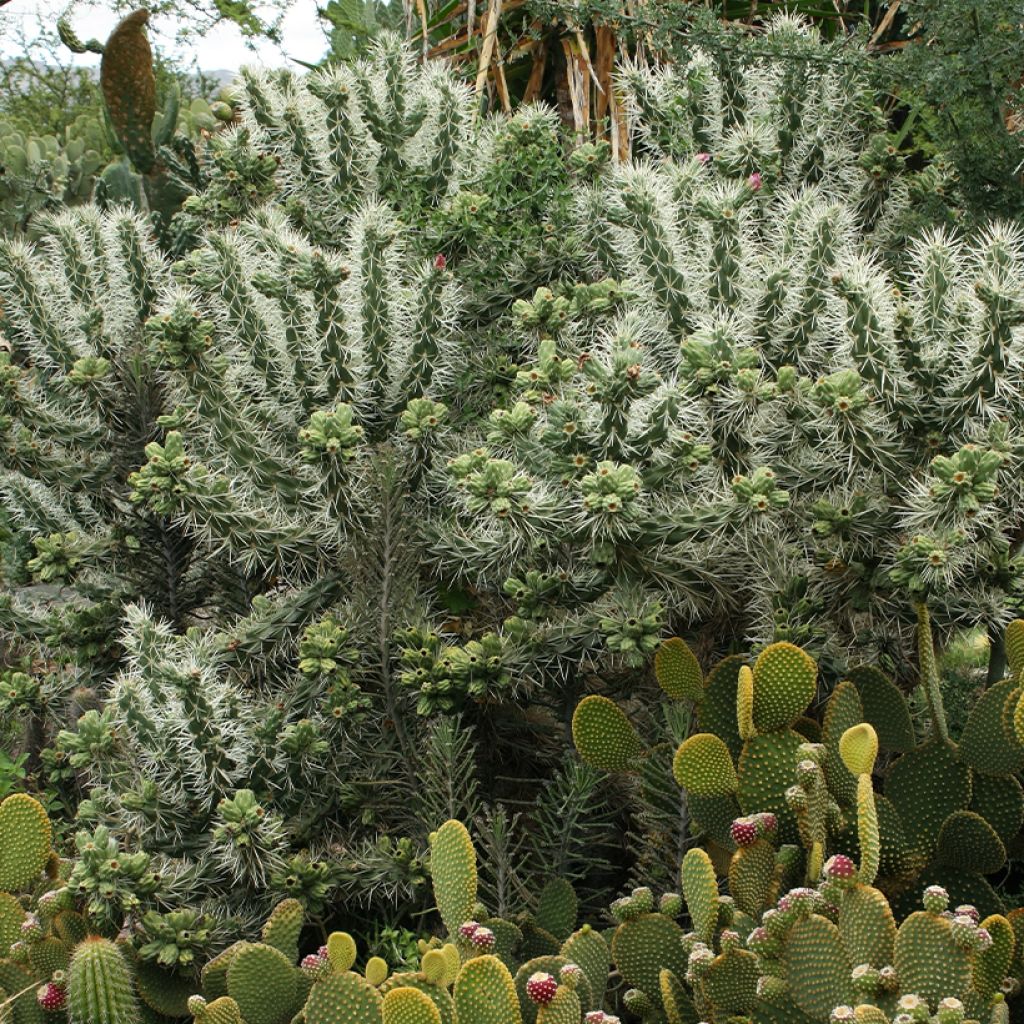

Cylindropuntia tunicata
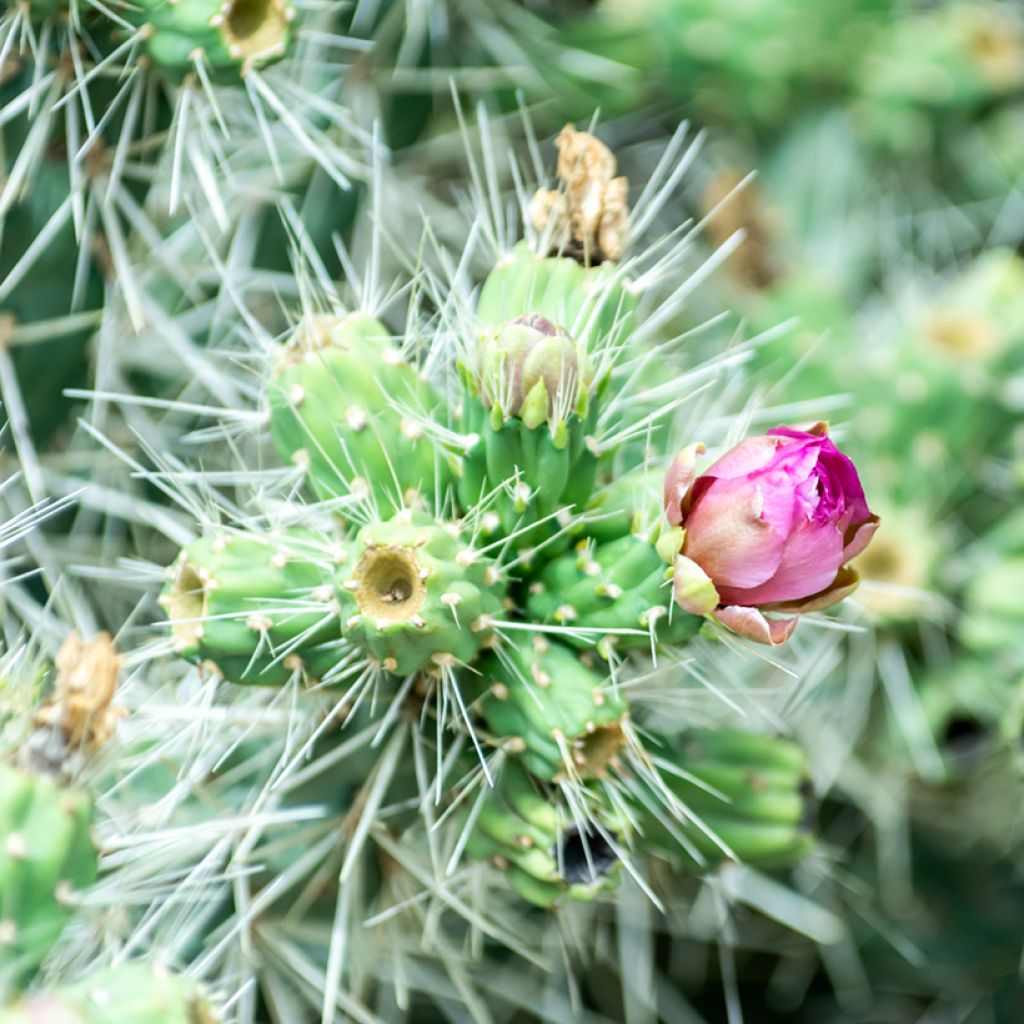

Cylindropuntia tunicata
Cylindropuntia tunicata
Cylindropuntia tunicata
Sheathed Cholla, Sheath Cholla
Very beautiful plant, be careful as it tends to be invasive, it is better to put it in a pot or container. In my region, Hérault, near Clermont l'Hérault, the region did not hesitate to eradicate it, unfortunately. However, it is not fragile and reproduces through animals that pass too close and thus catch a small shoot that will easily take root (easy cuttings). The stings can be painful, this plant clings to everything as soon as it is touched (fabric, leather, only metal escapes!). It is very easy to maintain and is among my favorites for their beauty...
Georges, 25/07/2023
Why not try an alternative variety in stock?
View all →This plant carries a 12 months recovery warranty
More information
We guarantee the quality of our plants for a full growing cycle, and will replace at our expense any plant that fails to recover under normal climatic and planting conditions.
From €5.90 for pickup delivery and €6.90 for home delivery
Express home delivery from €8.90.
Does this plant fit my garden?
Set up your Plantfit profile →
Description
Cylindropuntia tunicata, (also known as Opuntia tunicata), is locally known as the Sheathed Cholla. It is a particularly branched cactus that forms an unusual clump, with a variable shape, resembling a large white to yellowish flattened sea urchin, bristling with spines. This species proves remarkably resistant to drought and relatively hardy in dry soil. This unique cactus also offers delicate ephemeral flowers like translucent silk, in shades of yellow, green, and amber. It is cultivated in rocky or sandy, poor and well-drained soil, in full sun. An astonishing plant in a minimalist setting, which naturally structures exotic or contemporary spaces. Cultivation in open ground is easier in warm climates.
Cylindropuntia tunicata is a succulent plant devoid of leaves from the Cactaceae family. This botanical species is native to the Chihuahuan Desert, Texas, the entire northern region of Mexico, and certain regions of South America (Ecuador, Bolivia, Peru, Chile). In nature, it grows in plains or rocky areas at altitudes ranging from 100 to 2300m (328 to 7546ft). Over time, the plant forms a highly branched, very dense, often spreading small bush. An adult specimen will reach an average of 50cm (20in) in all directions. The vegetation consists of a trunk dividing into numerous branches called articles, in the shape of cylinders, devoid of leaves, measuring 5 to 20cm (2 to 8in) long and 1.5 to 2.5cm (1n) in diameter. Their pale green surface is covered with oval protuberances. They are abundantly provided with spikes measuring up to 6cm (2in) long. These spikes are arranged in groups of 5 to 12 on very close areoles. They are so numerous that they hide the branches. Their colour ranges from pearly white to pale-yellow, depending on the strains. In June, floral articles appear at their ends, bearing cup-shaped flowers 3 to 4cm (1 to 2in) in diameter, centred on a heart of yellow stamens. The flowers give way to frequently sterile fruits, yellow to yellow-green, often tinged with red, shaped like tops or clubs, measuring 2.5 to 5cm (1 to 2in) long. The flowers are spineless or only slightly prickly. Occasionally, parts of the plant fall to the ground and easily take root upon contact with the soil.
Cylindropuntia tunicata must be handled with protective gloves due to its numerous spikes. In warm regions, this cactus will find its place in a large rock garden, a gravel bed, or at the boundaries of a dry garden, where its silhouette will stand out in a mineral and austere setting composed of a few grasses, agaves, Hesperaloe parviflora, and other desert plants such as Yuccas and Dasylirions. It is also possible to cultivate this Cylindropuntia in a pot on a terrace by placing it in the sunniest spot in the garden. Container cultivation allows you to protect the plant over winter.
Report an error about the product description
Flowering
Foliage
Plant habit
Botanical data
Cylindropuntia
tunicata
Cactaceae
Sheathed Cholla, Sheath Cholla
North America
Other Opuntia
Planting and care
Handle Cylindropuntia tunicata with protective gloves.
Plant it in spring or early autumn, in full sun, in well-drained preferably poor, rocky, or sandy soil. It tolerates winter cold in dry soil and can withstand dry or even arid soils in summer. A little water in spring will be beneficial for its growth and flowering induction. It can withstand frost down to about -12°C (10.4°F), but is sensitive to snow. This species also tolerates sea spray and can therefore be perfectly cultivated by the seaside. It is not known to have any enemies.
Substrate cultivation: 3/4 potting soil + 1/4 vegetable soil + organic fertiliser for potted plants. Sandy, very rocky soil, low in clay for open ground cultivation.
Multiplication by cutting: take a section at a junction, place it on a cactus-type substrate for a few days until a callus forms. Then bury the base of the cutting a little deeper into the soil and water regularly. The plant will not flower until it is 3-4 years old.
Planting period
Intended location
Care
-
, onOrder confirmed
Reply from on Promesse de fleurs
Cacti and succulents
Haven't found what you were looking for?
Hardiness is the lowest winter temperature a plant can endure without suffering serious damage or even dying. However, hardiness is affected by location (a sheltered area, such as a patio), protection (winter cover) and soil type (hardiness is improved by well-drained soil).

Photo Sharing Terms & Conditions
In order to encourage gardeners to interact and share their experiences, Promesse de fleurs offers various media enabling content to be uploaded onto its Site - in particular via the ‘Photo sharing’ module.
The User agrees to refrain from:
- Posting any content that is illegal, prejudicial, insulting, racist, inciteful to hatred, revisionist, contrary to public decency, that infringes on privacy or on the privacy rights of third parties, in particular the publicity rights of persons and goods, intellectual property rights, or the right to privacy.
- Submitting content on behalf of a third party;
- Impersonate the identity of a third party and/or publish any personal information about a third party;
In general, the User undertakes to refrain from any unethical behaviour.
All Content (in particular text, comments, files, images, photos, videos, creative works, etc.), which may be subject to property or intellectual property rights, image or other private rights, shall remain the property of the User, subject to the limited rights granted by the terms of the licence granted by Promesse de fleurs as stated below. Users are at liberty to publish or not to publish such Content on the Site, notably via the ‘Photo Sharing’ facility, and accept that this Content shall be made public and freely accessible, notably on the Internet.
Users further acknowledge, undertake to have ,and guarantee that they hold all necessary rights and permissions to publish such material on the Site, in particular with regard to the legislation in force pertaining to any privacy, property, intellectual property, image, or contractual rights, or rights of any other nature. By publishing such Content on the Site, Users acknowledge accepting full liability as publishers of the Content within the meaning of the law, and grant Promesse de fleurs, free of charge, an inclusive, worldwide licence for the said Content for the entire duration of its publication, including all reproduction, representation, up/downloading, displaying, performing, transmission, and storage rights.
Users also grant permission for their name to be linked to the Content and accept that this link may not always be made available.
By engaging in posting material, Users consent to their Content becoming automatically accessible on the Internet, in particular on other sites and/or blogs and/or web pages of the Promesse de fleurs site, including in particular social pages and the Promesse de fleurs catalogue.
Users may secure the removal of entrusted content free of charge by issuing a simple request via our contact form.
The flowering period indicated on our website applies to countries and regions located in USDA zone 8 (France, the United Kingdom, Ireland, the Netherlands, etc.)
It will vary according to where you live:
- In zones 9 to 10 (Italy, Spain, Greece, etc.), flowering will occur about 2 to 4 weeks earlier.
- In zones 6 to 7 (Germany, Poland, Slovenia, and lower mountainous regions), flowering will be delayed by 2 to 3 weeks.
- In zone 5 (Central Europe, Scandinavia), blooming will be delayed by 3 to 5 weeks.
In temperate climates, pruning of spring-flowering shrubs (forsythia, spireas, etc.) should be done just after flowering.
Pruning of summer-flowering shrubs (Indian Lilac, Perovskia, etc.) can be done in winter or spring.
In cold regions as well as with frost-sensitive plants, avoid pruning too early when severe frosts may still occur.
The planting period indicated on our website applies to countries and regions located in USDA zone 8 (France, United Kingdom, Ireland, Netherlands).
It will vary according to where you live:
- In Mediterranean zones (Marseille, Madrid, Milan, etc.), autumn and winter are the best planting periods.
- In continental zones (Strasbourg, Munich, Vienna, etc.), delay planting by 2 to 3 weeks in spring and bring it forward by 2 to 4 weeks in autumn.
- In mountainous regions (the Alps, Pyrenees, Carpathians, etc.), it is best to plant in late spring (May-June) or late summer (August-September).
The harvesting period indicated on our website applies to countries and regions in USDA zone 8 (France, England, Ireland, the Netherlands).
In colder areas (Scandinavia, Poland, Austria...) fruit and vegetable harvests are likely to be delayed by 3-4 weeks.
In warmer areas (Italy, Spain, Greece, etc.), harvesting will probably take place earlier, depending on weather conditions.
The sowing periods indicated on our website apply to countries and regions within USDA Zone 8 (France, UK, Ireland, Netherlands).
In colder areas (Scandinavia, Poland, Austria...), delay any outdoor sowing by 3-4 weeks, or sow under glass.
In warmer climes (Italy, Spain, Greece, etc.), bring outdoor sowing forward by a few weeks.


































